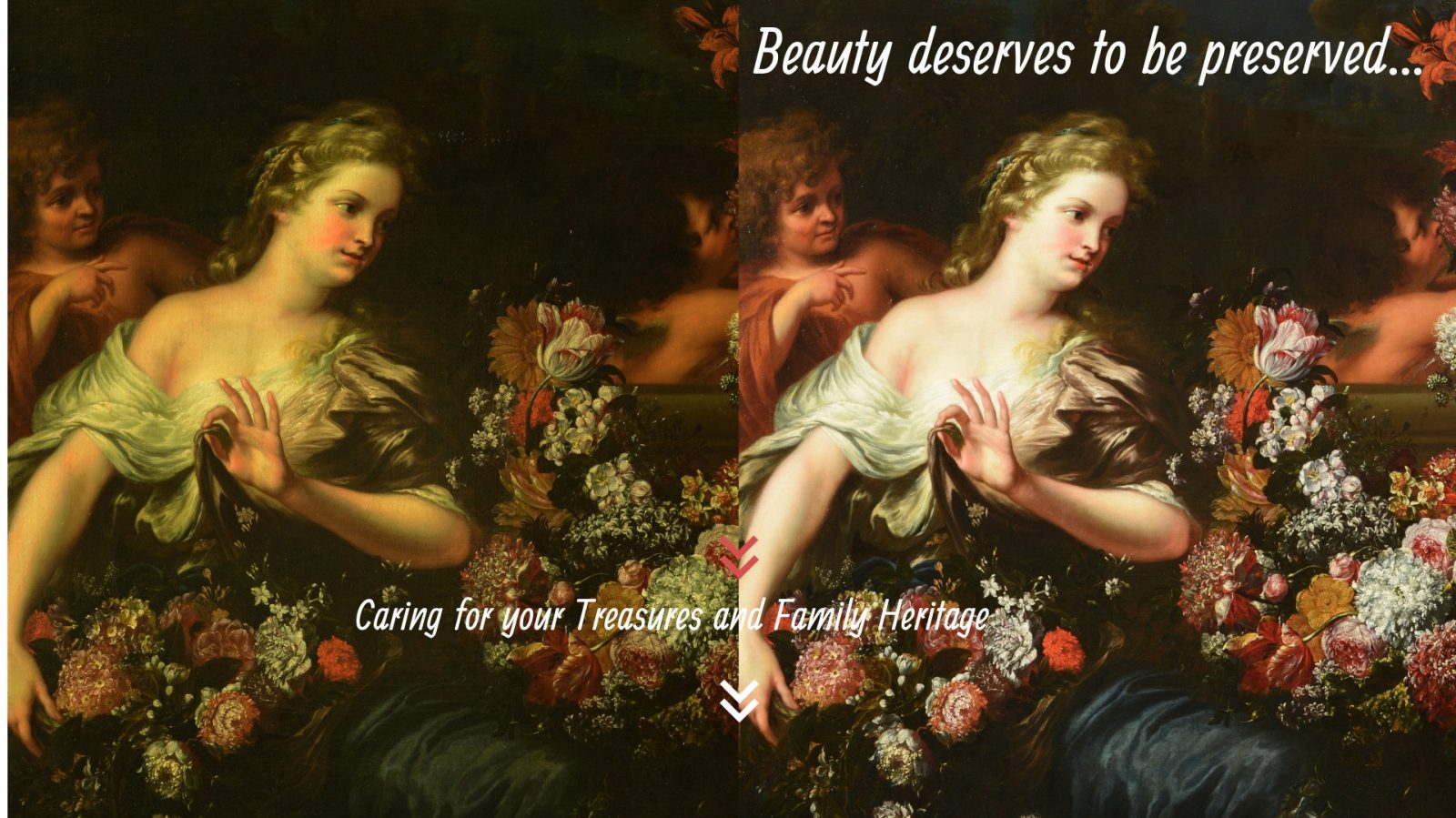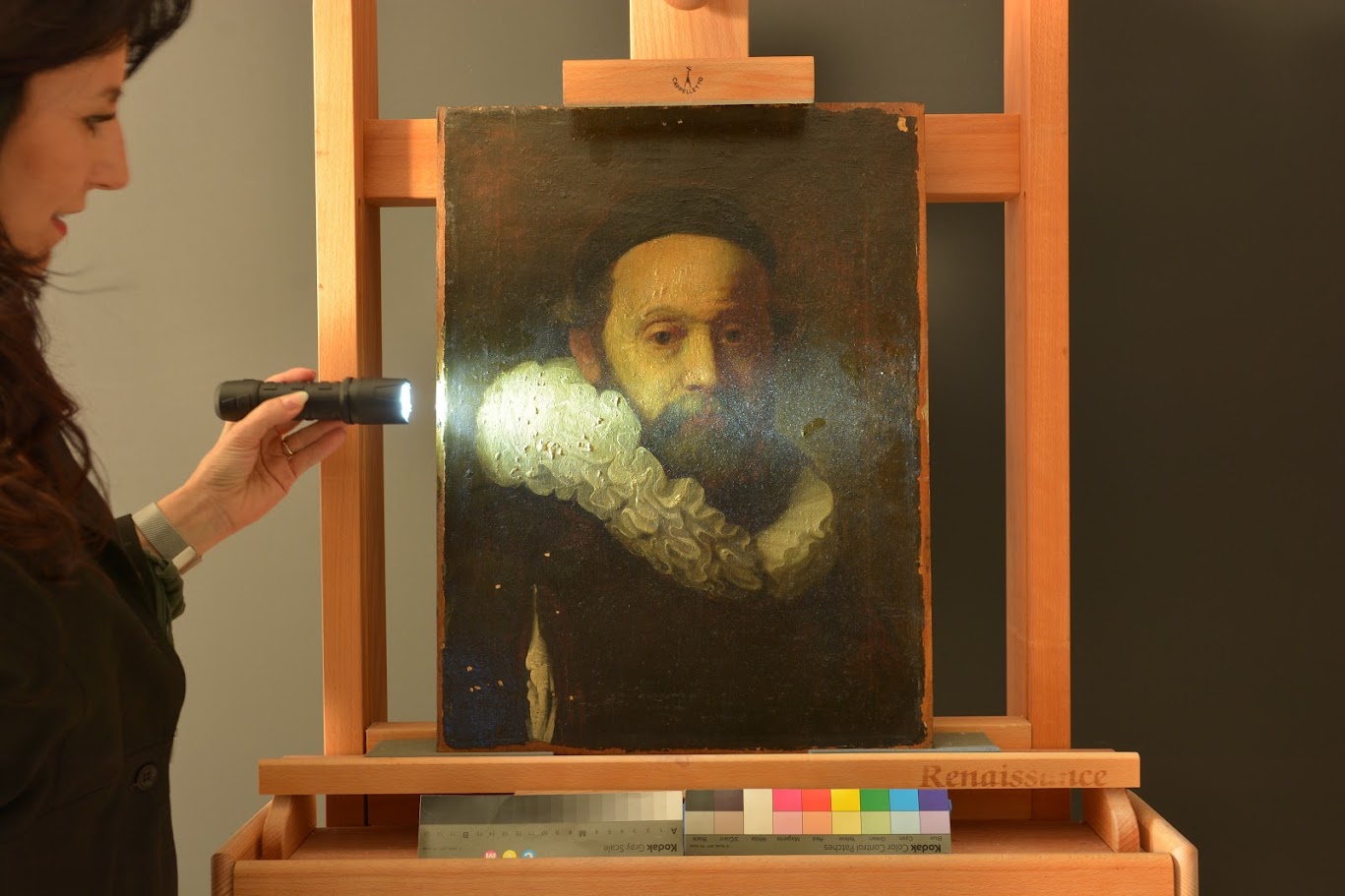
Expert Advice from an Art Conservator
Have you ever noticed a fine layer of dust settling on your favorite painting, subtly dimming its once-vivid colors? It is a familiar experience for art collectors and enthusiasts alike. As an art conservator, one of the most common questions I receive is, “Should I dust my paintings?”
The answer is a resounding yes, but with careful consideration. Dusting isn’t just about enhancing the visual appeal of your artwork. It plays a crucial role in preserving its condition and ensuring its longevity. However, improper dusting can inadvertently cause damage, risking the integrity of the piece you are trying to protect.
In this guide, I will explain the essentials of dusting paintings and offer practical tips to help you maintain your artwork safely and effectively. Let’s ensure that your treasured pieces continue to captivate and inspire for years to come.
Why Dusting Your Painting is Crucial
Dust might seem harmless, but it can become a peril to artworks over time. Dust particles can be abrasive and acidic. When dust accumulates on the surface of a painting, it can embed into the varnish or interact chemically with the paint layers, leading to discoloration and degradation. Regular dusting helps prevent these potential damages, ensuring that your art remains vibrant and preserved for future generations.
How to Dust Your Painting Safely
Examine Your Artwork
Before you begin dusting, inspect your painting closely for any signs of instability, such as flaking, cracking paint, or tenting of color. Perform the examination using a raking light to highlight any textural qualities or imperfections that might not be visible under normal lighting conditions. Hold a flashlight at a shallow angle on the side of the artwork to create this effect. Inspecting a painting in raking light before dusting is crucial as it allows you to identify any unstable areas, ensuring that you do not unintentionally worsen or damage the paint layer during cleaning.
Gather the Right Tools for Dusting Your Painting
Selecting the right tools for dusting is crucial to ensure you clean your artwork without causing any harm. At Stella Art Conservation, we recommend the following:
Brush Selection: Use a flat, soft, natural-hair artist’s brush. Sable or goat hair brushes are preferable because of their gentle and effective cleaning properties. These brushes are soft enough to remove dust without scratching the paint surface.
Alternative Options: Brushes designed for photographic lenses or soft makeup brushes can also be effective, provided they are clean and free from any oils or makeup residue. The key is to use brushes that are very soft and gentle on the artwork.
Dusting Tools Checklist:
- Flat, soft, natural-hair artist’s brush (sable or goat hair preferred)
- Clean, soft makeup brushes as an alternative (must be free from oils or residue)
- Low-suction vacuum (keep nozzle a safe distance from the surface)

Avoiding Synthetic Dusters: Do not use synthetic dusters, especially those coated and impregnated with fragrances or other chemicals. Through our Collection Maintenance service, tailored specifically for art collectors, we have frequently encountered residues of synthetic fibers trapped in the paint layers during our comprehensive examinations of paintings. These fibers seem harmless at first glance. However, they can cause significant damage over time, particularly in areas of impasto where the paint is more textured and vulnerable.
These fibers can snag and pull off the paint, structurally damaging the artwork. Additionally, they can deposit residues on the artwork that are difficult to remove and potentially damaging.
Vacuum Use: If the level of dust is high, you can use a vacuum to suck the dust away from the painting gently. It is essential to keep the vacuum at a safe distance from the artwork to avoid any contact that could damage the paint surface. Use a low suction setting and hold the nozzle at least a few inches away from the painting.
Dusting Technique: Lightly sweep the brush over the surface of the painting. Start from the top and work your way downward in one direction, avoiding going back and forth, as this can grind the dust into the surface. Hence, repeat the process, starting from the top and brushing gently the surface horizontally.
Handle Frames with Care: If the painting is framed, dust the frame first using a separate brush. Be particularly careful with ornate or gilded frames, which are more delicate.
Avoiding Synthetic Dusters: Do not use synthetic dusters, especially those coated and impregnated with fragrances or other chemicals. Through our Collection Maintenance service, tailored specifically for art collectors, we have frequently encountered residues of synthetic fibers trapped in the paint layers during our comprehensive examinations of paintings. These fibers seem harmless at first glance. However, they can cause significant damage over time, particularly in areas of impasto where the paint is more textured and vulnerable.
These fibers can snag and pull off the paint, structurally damaging the artwork. Additionally, they can deposit residues on the artwork that are difficult to remove and potentially damaging.
Vacuum Use: If the level of dust is high, you can use a vacuum to suck the dust away from the painting gently. It is essential to keep the vacuum at a safe distance from the artwork to avoid any contact that could damage the paint surface. Use a low suction setting and hold the nozzle at least a few inches away from the painting.
Dusting Technique: Lightly sweep the brush over the surface of the painting. Start from the top and work your way downward in one direction, avoiding going back and forth, as this can grind the dust into the surface. Hence, repeat the process, starting from the top and brushing gently the surface horizontally.
Handle Frames with Care: If the painting is framed, dust the frame first using a separate brush. Be particularly careful with ornate or gilded frames, which are more delicate.
When to Stop Dusting and Call a Professional
If you notice any signs of paint lifting, flaking, or other forms of instability during your inspection, stop immediately. Even the gentlest cleaning techniques can exacerbate these conditions. Continuing to dust a painting in this state can cause irreversible damage. Instead, call a trusted conservator to assess and stabilize the artwork in a controlled environment.
Why You Should Never Use Solvents or Cleaning Products on Paintings
It is essential to avoid solvents, water, and commercial cleaning products when caring for paintings, as these substances can cause irreversible damage. Solvents have the potential to dissolve varnish and paint layers, often resulting in noticeable color changes, surface deterioration, or even paint loss. Similarly, commercial cleaners frequently contain harsh chemicals that interact with the materials used in the artwork, causing permanent staining, discoloration, or weakening of the canvas and underlying structure.

Even water, seemingly harmless, poses a significant risk. Moisture can seep into the layers of paint, leading to swelling, warping, and eventual flaking or cracking. The damage caused by improper cleaning methods is often cumulative, meaning even small attempts to clean dust or dirt can accelerate deterioration over time.
If you notice dust buildup or discoloration on your painting, it is crucial to resist the urge to clean it yourself. Professional conservators are trained to assess and treat artworks using safe, specialized techniques that preserve their integrity without compromising delicate surfaces. When in doubt, always consult a conservator to ensure your painting remains protected for years to come.
Recommended Frequency for Dusting Your Paintings
The frequency of dusting depends largely on the environment in which the painting is displayed. As a general guideline, dusting every three to six months is sufficient for most indoor settings. However, paintings situated in high-traffic areas, near open windows, fireplaces, or in spaces prone to dust, smoke, or pollution may require more frequent attention. In such environments, light dusting every one to two months can help prevent buildup that may lead to surface abrasion or embedment over time.
It is essential to regularly inspect your painting for signs of dust accumulation rather than rely solely on a set schedule. Subtle layers of dust may not always be immediately visible but can gradually dull the surface or interact with the varnish. By gently examining your artwork under raking light, you can gauge whether dusting is necessary.

Before dusting After dusting
Need Professional Art Care? Preserve Your Collection with Expert Maintenance
Regular dusting is a vital yet often overlooked aspect of painting maintenance. By adopting proper techniques, you help protect your artwork from gradual damage and maintain its brilliance over time.
However, if you encounter flaking paint, cracking, discoloration, or lifting varnish, pause immediately, these are indicators that the artwork requires professional attention. Attempting to dust or clean fragile pieces without expertise can inadvertently worsen the condition, leading to permanent loss of detail or value.
At Stella Art Conservation, we specialize in Collection Maintenance Services that safeguard the integrity of your treasured art. Our experienced conservators provide comprehensive assessments, gentle cleanings, and preservation strategies to ensure your collection stands the test of time.
✨ Ready to give your artwork the care it deserves? Explore Our Collection Maintenance Services
If you’d like to stay informed and ensure your paintings remain in pristine condition, discover the 5 common mistakes to avoid when preserving your collection.
👉 Read: 5 Mistakes You Should Avoid to Better Preserve Your Painting



